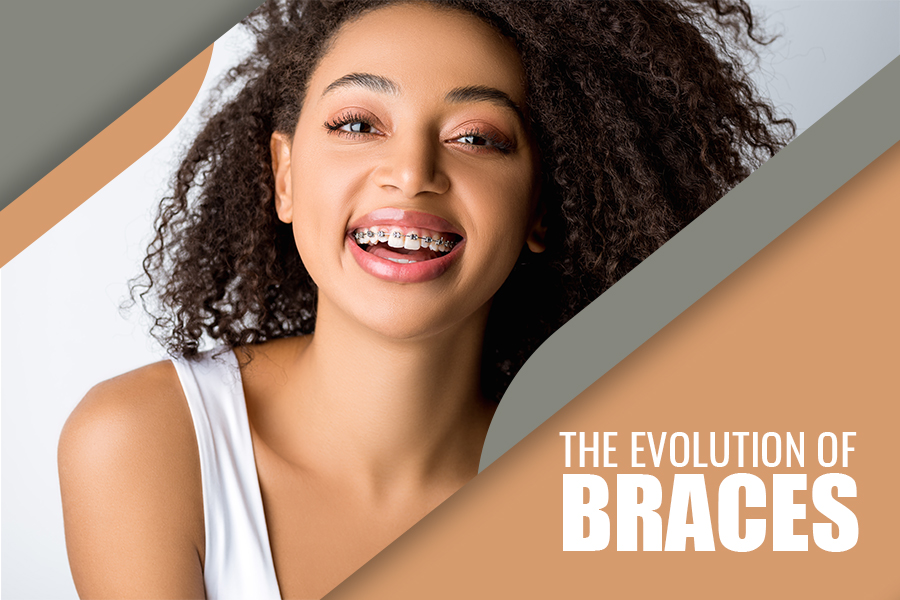 Open 6 days a week
Open 6 days a week
![]() Ground Floor 70 Great Russell Street, Holborn, London WC1B 3BN
Ground Floor 70 Great Russell Street, Holborn, London WC1B 3BN
This month special offer, £299 home teeth whitening instead of £399
 Open 6 days a week
Open 6 days a week
![]() Ground Floor 70 Great Russell Street, Holborn, London WC1B 3BN
Ground Floor 70 Great Russell Street, Holborn, London WC1B 3BN
This month special offer, £299 home teeth whitening instead of £399

It's been amazing seeing the dramatic changes technology has brought to humanity in the last few decades. Almost every sector of human activity has been impacted. Billions of data are now stored in the clouds; we ride in electric cars, augmented reality, and virtual reality makes it possible to create a realistic physical environment and improve it using computer tech and components. These changes have been massive! The field of orthodontics is not left out. Long gone are the days when patients could only get metal braces. Let's take you through a journey of the evolution of braces.
The first trace of braces can be linked to Ancient Egypt, where the teeth of mummies were found to be corrected with a cord of dried animal skin running through the length. During this period, archaeologists also discovered evidence of retainers that exerted a gentle force on the teeth. It is noteworthy to mention that Aulus Cornelius Celsus, an ancient Roman, was the birth father of braces. History holds that he penned down his effort to straighten his teeth using few methods including a woven gold wire installed along with the teeth.
Nothing was heard of orthodontic technology in the dark ages until the later part of 1700’s. Dentistry began to evolve with the French taking the lead. They invented mouthguards known to exert point pressure in teeth straightening. The first people to extract wisdom teeth to avoid overcrowding were the French. The braces we know today were officially invented in 1819 by Christophe-Francois Delabarre. His method of straightening teeth was with a woven wire he designed to be installed on both upper and lower teeth for a length of time.
The 20th century saw advanced tools and techniques for teeth straightening. There was no bonding agent at this time, so each tooth was wrapped up with a wire. No comfort came with the sharp edges of the wire. Even the sight of having a "wire mouth" wasn't appealing. Only the rich could afford braces, as gold was the only metal that could be moulded into braces.
The light of technology hit humanity in the 1970's and broke many barriers. This was seen in computers, music and orthodontics. Combining new bonding agents, stainless steel and fresh techniques, the metal braces as we have this day was birthed. Orthodontists got to know how best to position braces and reduce the wearing time and discomfort it caused patients. Alternative metals came into use such that the average person could buy braces. Consequently, more people turned to treatment for a straighter smile. And this sparked up more research.
So many options now exist for teeth straightening than there was before. Before now, the only option was large and uncomfortable metal braces or retainers. Today, the good news is that you can have Invisalign and other clear braces in London as a get-away from metal braces. These options are a perfectly natural fit over the teeth, and patients can take them out to eat or have them cleaned. Most people are in love with the appearance and convenience invisible braces bring.
Invisible braces are undoubtedly effective for most people, but some may need metal braces for treatment to be more effective. The braces of two decades ago have been replaced with braces of minimalist design - very small size and discreet. Even the metal part that is bonded on the teeth is much slimmer, with clear bands wrapped around it to look just like your natural teeth. Interestingly, these clear bands are produced in several shades. You can select one that best suits you. Modern braces now come with smoother edges. This means less gum injury.
Orthodontics have indeed seen a dramatic change over time. You should expect more of less invasive braces for daily use. According to experts, with time, invisible braces will get thinner and more comfortable. There are speculations that braces will become extinct, and using computer-based methods, an orthodontist will have the ability to offer quick teeth straightening. Regardless of which turn braces take, it is amazing to realise how much importance has been placed on a straight smile since civilisation started.
Consult your orthodontist to know if braces are your smile solution. They'll assess your teeth and determine if you need braces and what type is best for a great outcome. Most people go for Invisalign braces in London; metal braces can straighten a smile better sometimes. Should you be dissuaded from choosing braces because it's pricey, bear in mind that you can afford modern braces. There are many dental plans that come with financing options that can help you pay easily.
Do contact our orthodontist today and find out what plans for payment are available. You might be surprised at what you'll get.